Colombia
Welcome to Colombia
Colombia, the heart of South America, is a country where vibrant culture, breathtaking landscapes, and warm hospitality come together to create an unforgettable travel experience. Whether you’re drawn by its lively cities, lush rainforests, golden beaches, or colorful colonial towns, Colombia is ready to surprise and enchant you in 2025.
Colombia is rapidly emerging as one of Latin America’s most dynamic travel destinations. After several years of growth and increasing international connectivity, 2025 is shaping up to be a banner year for tourism. With direct flights from major global hubs, improved infrastructure, and a renewed focus on showcasing its natural and cultural treasures, Colombia is more accessible and welcoming than ever before. The country offers a diverse array of experiences: from the cosmopolitan buzz of Bogotá and Medellín to the Caribbean charm of Cartagena and the wild beauty of the Amazon and Pacific coasts. Whether you’re an adventure seeker, a foodie, a history buff, or simply in search of relaxation, Colombia has something for everyone.
Why Visit Colombia?
1.
Unmatched Biodiversity and Natural Beauty
Colombia is the second-most biodiverse country in the world, home to more bird species than any other nation and an astonishing variety of ecosystems. You can hike through cloud forests in the Andes, explore the Amazon rainforest, relax on Caribbean beaches, or discover the surreal landscapes of the Tatacoa Desert—all within a single trip. The country’s national parks and reserves are a haven for nature lovers and adventurers alike.
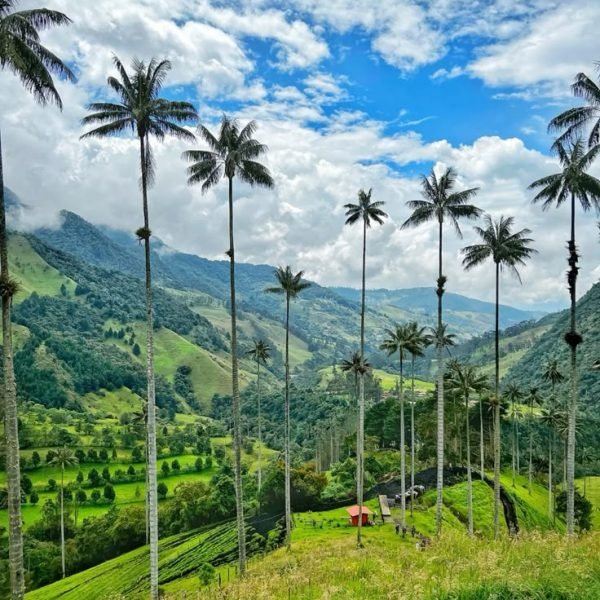
2.
Warm, Welcoming Culture and Year-Round Festivities
Colombians are renowned for their hospitality and warmth. Visitors often remark on how easy it is to feel at home, whether you’re chatting with locals in a bustling plaza or joining in the festivities at one of the country’s many colorful festivals. The country’s rich cultural tapestry is woven from Indigenous, African, and European influences, reflected in its music, dance, art, and cuisine. From the salsa rhythms of Cali to the street art of Bogotá, Colombia’s creative spirit is infectious.
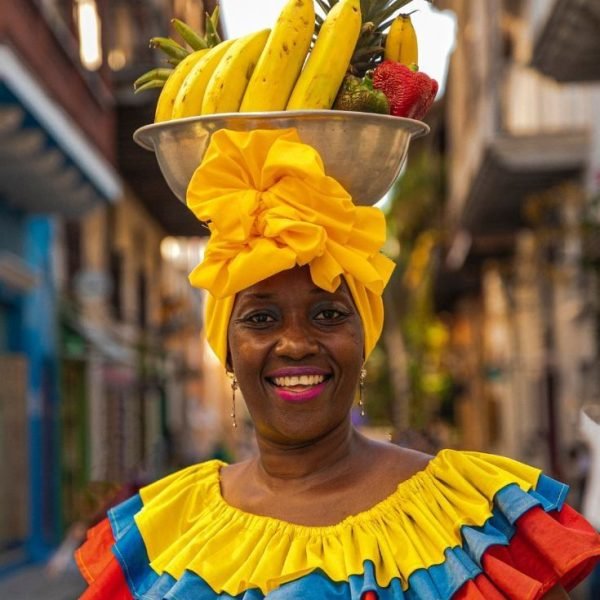
Planning Your Trip
Visa Information
Colombia offers a streamlined visa process for international visitors in 2025. Most travelers will require a valid passport with at least six months’ validity and two blank pages. The application process is handled online through the Ministry of Foreign Affairs portal. For a standard Visitor Visa, you’ll need an invitation letter or travel itinerary, proof of financial means (such as recent bank statements), and a flight ticket reservation. Once you submit your documents and pay the consular fee, processing typically takes between five and ten business days. If approved, you’ll receive either an electronic or physical visa, depending on your preference.
For longer stays, work, or residency, additional documents such as employment contracts or investment certificates may be required. Always check the latest requirements before your trip, as regulations can change from year to year.
Best Time to Visit
Colombia’s diverse geography means there’s always somewhere with perfect weather, but the best time for most travelers is during the dry season, from December to March. This period offers sunny, warm days along the Caribbean coast and mild, dry weather in the Andes—ideal for exploring cities like Bogotá, Medellín, and Cartagena, or for hiking in the Coffee Region and to the Lost City (Ciudad Perdida).
- December to March (Dry Season): The most popular time for visitors, especially those escaping colder northern winters. Expect lively festivals, bustling cities, and vibrant beach scenes. Carnaval de Barranquilla (February or March) is a highlight, offering a riot of color and music.
- April to May & October to November (Rainy Seasons): These months bring heavier rainfall, especially in the Amazon and Pacific regions, which can make jungle trekking and some outdoor activities more challenging. However, the rain also brings lush landscapes and fewer crowds.
- Special Note for Cartagena: The best time to visit is mid-December to early April, when the weather is perfect for enjoying the city’s historic old town, beaches, and island excursions. January is especially lively with the Hay Festival, an international arts and literature event.
Getting To and Around
Arriving in Colombia
Colombia’s international air connectivity has expanded significantly, with direct flights from major cities in North and South America, Europe, and beyond. The main international gateways are Bogotá (El Dorado International Airport), Medellín (José María Córdova International Airport), and Cartagena (Rafael Núñez International Airport). In 2025, over half of international reservations are for direct flights, making travel to Colombia more convenient than ever.
Getting Around the Country
Colombia’s transportation network is diverse and efficient, catering to every type of traveler:
- Domestic Flights: Given the country’s size and varied terrain, flying is often the quickest way to travel between major cities and regions. Domestic airlines connect Bogotá, Medellín, Cali, Cartagena, Santa Marta, and other key destinations.
- Buses and Busetas: Intercity buses are comfortable and affordable, connecting even remote towns. Within cities, “busetas” (small buses) and “colectivos” (shared taxis or vans) are the most common forms of public transport. Fares are low, and routes are extensive, though they can be confusing for first-timers—don’t hesitate to ask drivers or locals for help.
- Urban Transit: Bogotá’s TransMilenio is a rapid bus system with dedicated lanes, functioning much like a metro. Medellín boasts Colombia’s only metro system, which is clean, efficient, and a great way to explore the city.
- Taxis and Ride-Sharing: Taxis are widely available, and ride-sharing apps operate in most major cities. Always use official taxis or apps for safety.
- Car Rentals: Renting a car is possible, especially for exploring rural areas or the Coffee Region, but be prepared for winding mountain roads and varying driving conditions.
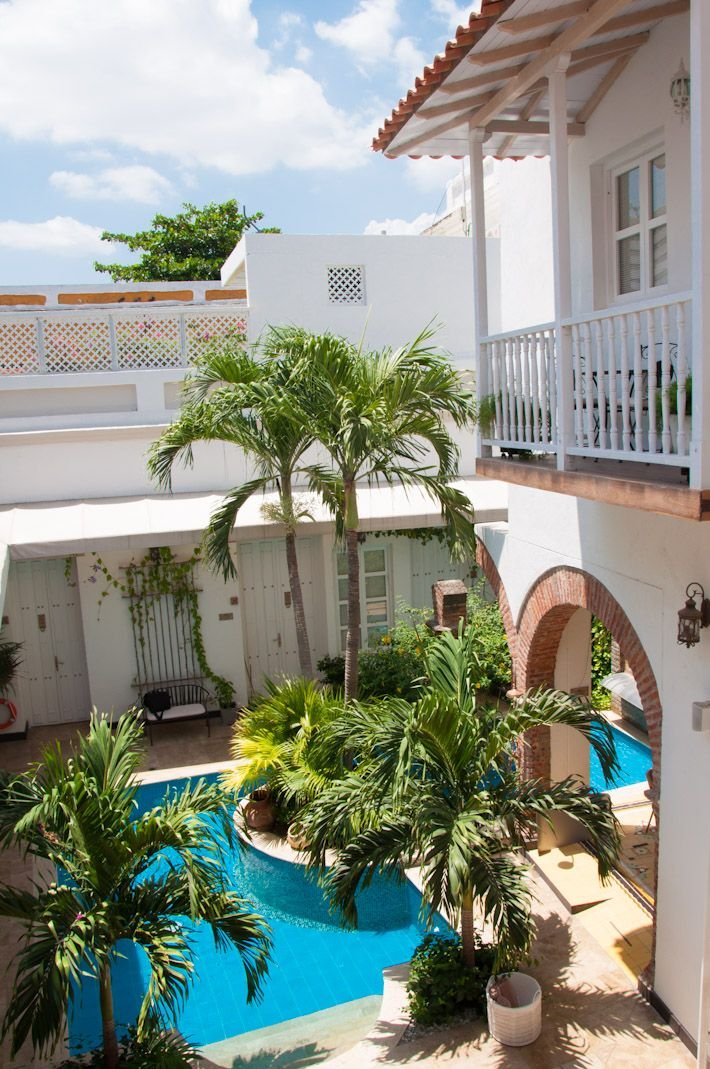
Accommodation
Colombia offers a wide range of accommodation options to suit every traveler’s taste and budget in 2025, from luxury hotels and boutique stays to budget hostels and eco-lodges. Whether you’re visiting bustling cities, coastal towns, or remote natural areas, you’ll find comfortable and welcoming places to rest.
Luxury and Boutique Hotels
Major cities like Bogotá, Medellín, and Cartagena boast numerous upscale hotels that combine modern amenities with local charm. Many luxury hotels feature rooftop pools, spas, and fine dining options, often housed in beautifully restored colonial buildings or contemporary high-rises with stunning city or ocean views. Boutique hotels are especially popular in historic areas such as Cartagena’s walled city, offering personalized service and unique décor reflecting Colombia’s rich culture.
Mid-Range Hotels
For travelers seeking comfort without breaking the bank, Colombia has many mid-range hotels that provide spacious rooms, breakfast included, and convenient locations near city centers or tourist attractions. These hotels often have friendly staff and amenities like free Wi-Fi, airport shuttles, and small pools.
Hostels and Budget Stays/ Eco-Lodges and Unique Stays
Hostels and Budget Stays
Backpackers and budget travelers will find a vibrant hostel scene across Colombia. Hostels often offer dormitory beds and private rooms, with communal kitchens, social areas, and organized tours. Popular hostels in places like Salento, Santa Marta, and Medellín are known for their lively atmospheres and helpful staff. Many budget accommodations are located near the main squares or beaches, making it easy to explore on foot.
Eco-Lodges and Unique Stays
For nature lovers, eco-lodges in regions like Tayrona National Park, the Amazon, and the Pacific coast provide rustic yet comfortable lodging immersed in natural surroundings. These accommodations emphasize sustainability and often include guided nature activities such as birdwatching, hiking, and river excursions.
All-Inclusive Resorts/ Tips for Booking
All-Inclusive Resorts
Along the Caribbean coast, especially in San Andrés and Cartagena, all-inclusive resorts offer a hassle-free vacation with meals, drinks, and activities included. These resorts are ideal for families or travelers looking to relax by the beach with everything taken care of.
Tips for Booking Accommodation in Colombia
- Book popular hotels and hostels well in advance during peak seasons (December to March) and festivals.
- Check reviews for cleanliness, safety, and service quality.
- Consider location carefully: staying in historic centers or near public transit can save time and transportation costs.
- Many hotels offer free cancellation, which is useful for flexible travel plans.
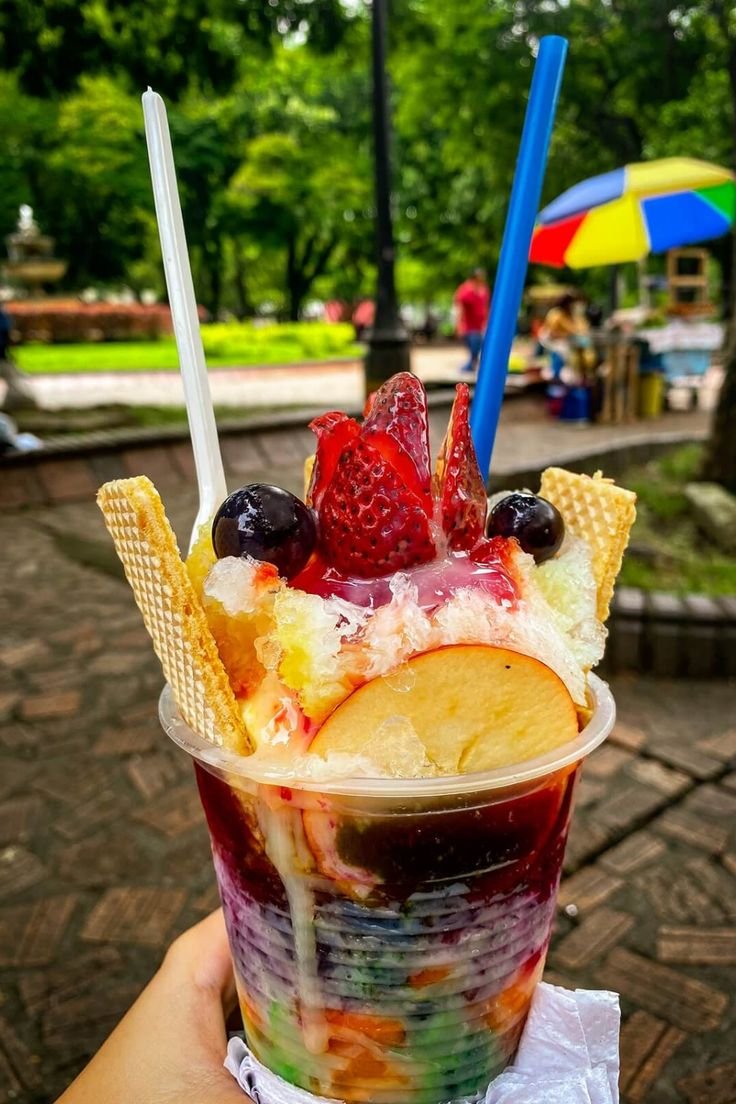
Food and Drink
Colombian cuisine is a vibrant reflection of its diverse geography and cultural heritage, offering an exciting culinary journey for visitors in 2025. From hearty traditional dishes to fresh tropical fruits and world-class coffee, Colombia’s food scene is rich and varied.
Traditional Colombian Cuisine
Each region has its own specialties, but some dishes are beloved nationwide:
- Arepas: Cornmeal cakes that are a staple breakfast or snack, often stuffed with cheese, meats, or eggs.
- Bandeja Paisa: A hearty platter from the Antioquia region featuring rice, beans, ground meat, chicharrón (fried pork belly), fried egg, plantain, avocado, and arepa.
- Ajiaco: A comforting chicken and potato soup from Bogotá, flavored with local herbs and served with corn on the cob and avocado.
- Sancocho: A traditional stew made with meat (chicken, beef, or fish), plantains, yucca, and corn, popular in coastal and rural areas.
- Empanadas: Fried or baked pastries filled with meat, cheese, or vegetables, perfect as street food or snacks.
Seafood and Coastal Flavors
On the Caribbean and Pacific coasts, fresh seafood dominates menus. Ceviche, fried fish, coconut rice, and patacones (fried green plantains) are common. The coastal cuisine often features Afro-Colombian influences with bold spices and tropical ingredients.
Coffee and Beverages
Colombia is famous worldwide for its coffee, considered among the best globally. Coffee tours in the Coffee Triangle region allow visitors to learn about cultivation and enjoy freshly brewed cups. Other popular drinks include:
- Aguardiente: An anise-flavored alcoholic beverage, widely consumed socially.
- Lulada: A refreshing drink made from lulo fruit, lime, and sugar, perfect for hot days.
- Chicha: A traditional fermented corn drink, often homemade and enjoyed in rural areas.
Modern Dining and International Cuisine
Colombian cities have seen a boom in contemporary dining, with chefs blending traditional ingredients with global techniques. Bogotá and Medellín offer a growing number of fine dining restaurants, fusion cuisine, and vibrant food markets. Street food stalls and casual eateries provide delicious and affordable meals, making it easy to sample local flavors on any budget.
Tips for Enjoying Food in Colombia
- Try local markets for fresh fruits, snacks, and authentic dishes.
- Drink bottled or filtered water to avoid stomach issues.
- Don’t miss out on trying street food, but choose vendors with good hygiene and busy stalls.
- Explore regional specialties by visiting different parts of the country.
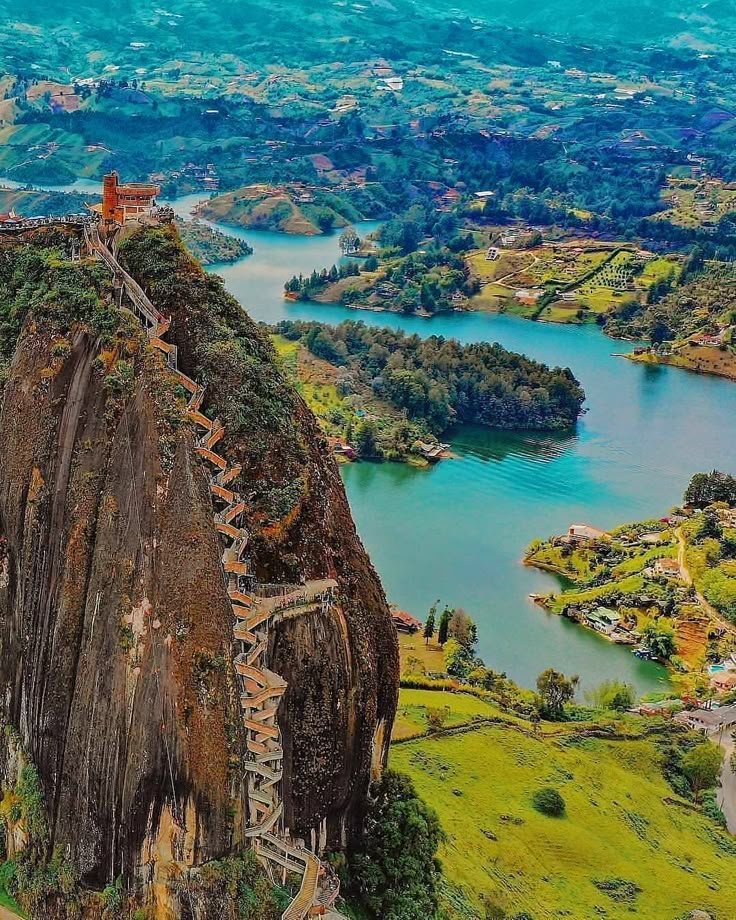
Must-See Attractions
- Cartagena and Its Walled City
Cartagena is arguably Colombia’s crown jewel on the Caribbean coast. Its historic walled city, a UNESCO World Heritage site, is a labyrinth of cobblestone streets, brightly colored colonial buildings, and lively plazas. Key sights include the imposing San Felipe de Barajas Fortress, the Palace of the Inquisition, and the charming Plaza de la Aduana. Beyond history, Cartagena offers beautiful beaches, vibrant nightlife, and rooftop bars with stunning sunset views. The nearby Rosario Islands are perfect for day trips to crystal-clear waters and coral reefs.
- Tayrona National Park
This park is a spectacular natural reserve where tropical rainforest meets the Caribbean Sea. Tayrona is famous for its biodiversity, pristine beaches, and indigenous heritage. Visitors can hike through jungle trails to secluded coves like Cabo San Juan, relax on white sand beaches, or explore archaeological sites. It’s a must for nature lovers and those seeking tranquility in a breathtaking setting.
- Medellín – The City of Eternal Spring
Medellín has transformed from its turbulent past into a vibrant cultural hub. Known for its perfect spring-like climate, the city offers innovative urban spaces like the Metrocable gondolas linking hillside neighborhoods, and the colorful street art of Comuna 13, a symbol of resilience and renewal. Explore the lively neighborhoods of El Poblado and Laureles for dining, nightlife, and shopping.
- Bogotá and Mount Monserrate
Colombia’s bustling capital is a mix of modernity and tradition. The historic district of La Candelaria features colonial architecture, museums like the Gold Museum, and vibrant street art. For panoramic views, take the funicular or cable car up Mount Monserrate, where you’ll find a church, local markets, and stunning vistas of the city below.
- The Lost City (Ciudad Perdida)
Hidden deep in the Sierra Nevada de Santa Marta, the Lost City is an ancient archaeological site older than Machu Picchu. Reaching it requires a multi-day trek through jungle and mountains, but the journey rewards adventurers with incredible scenery and a glimpse into Colombia’s indigenous past.
- Coffee Region (Zona Cafetera)
This lush region is famous for its coffee plantations, rolling green hills, and quaint towns like Salento and Manizales. Visitors can tour coffee farms, learn about the coffee-making process, and hike through the Cocora Valley, home to Colombia’s iconic towering wax palms.
- San Agustín Archaeological Park
A UNESCO World Heritage site, San Agustín is home to the largest collection of religious monuments and megalithic sculptures in South America. The mysterious stone statues and tombs scattered across the archaeological park offer a fascinating window into pre-Columbian cultures.
- Caño Cristales – The Liquid Rainbow
Known as the most beautiful river in the world, Caño Cristales dazzles with vibrant colors caused by unique aquatic plants. From July to October, the river’s reds, yellows, blues, and greens create a surreal spectacle in the Serranía de la Macarena National Park.
- San Andrés and Providencia Islands
These Caribbean islands offer turquoise waters, coral reefs, and laid-back island vibes. San Andrés is more developed with resorts and nightlife, while Providencia is quieter and perfect for snorkeling, diving, and exploring pristine beaches.
- Guatapé and El Peñol Rock
Just a couple of hours from Medellín, Guatapé is famous for its colorful zócalos (decorative panels) on houses and the massive granite monolith, El Peñol. Climb the 740 steps to the top for breathtaking views of the surrounding lakes and islands.
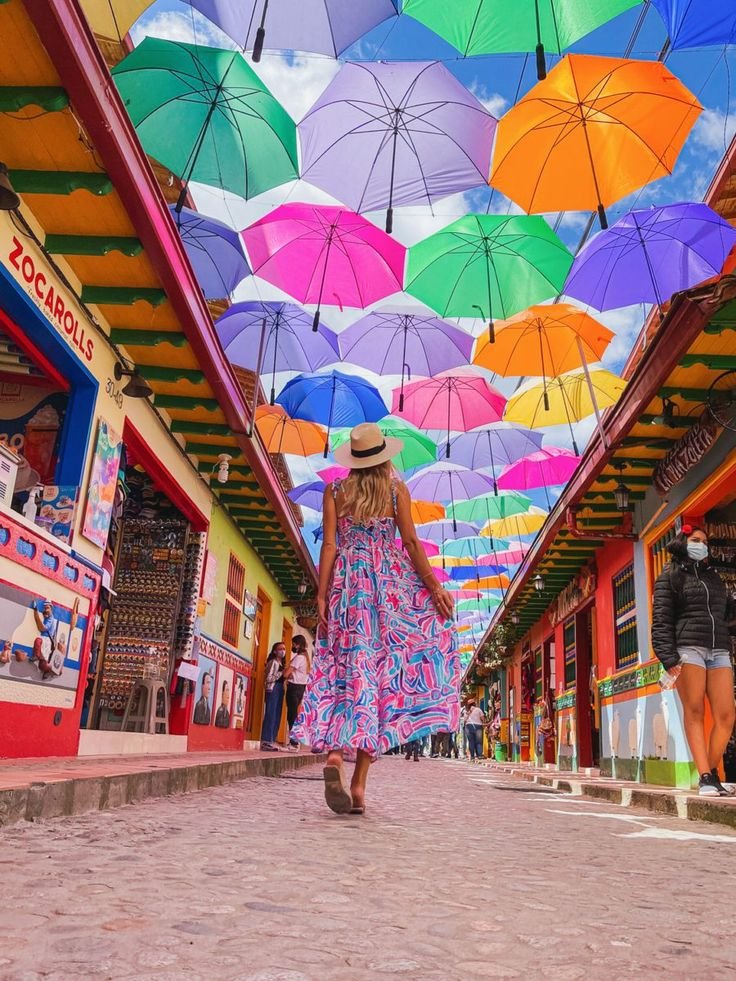
Must-Do Activities
- Explore Cartagena’s Nightlife and Sunset Boat Tours
Experience Cartagena’s vibrant nightlife in the Getsemaní neighborhood, known for its street art, lively bars, and music. For a romantic or relaxing evening, take a sunset boat tour along the coast to admire the city skyline and Caribbean Sea.
- Trek to the Lost City
Embark on a challenging 4-6 day trek through jungle, rivers, and mountains to reach Ciudad Perdida. Along the way, enjoy wildlife spotting, indigenous villages, and stunning landscapes. This is a once-in-a-lifetime adventure for active travelers.
- Coffee Farm Tours and Cocora Valley Hikes
Visit a working coffee plantation to learn about Colombia’s world-famous coffee, from bean to cup. Follow this with a hike in the Cocora Valley to see the towering wax palms, Colombia’s national tree, and enjoy the lush scenery.
- Discover Comuna 13’s Street Art and Transformation
Join a guided tour of Comuna 13 in Medellín to learn about its history and witness its vibrant street art. The neighborhood’s transformation is a powerful story of community resilience and creativity.
- Snorkeling and Diving in San Andrés and Providencia
Explore the coral reefs and marine life of these Caribbean islands. Providencia, in particular, offers pristine underwater environments with fewer tourists, ideal for snorkeling and diving enthusiasts.
- Visit the Salt Cathedral of Zipaquirá
This underground cathedral carved into a salt mine is a unique architectural and spiritual site near Bogotá. Wander through illuminated tunnels and chapels in this surreal subterranean world.
- Attend Barranquilla Carnival
If your trip coincides with the carnival season, don’t miss the Barranquilla Carnival, one of the biggest and most colorful festivals in Latin America. Expect parades, traditional music, dance, and vibrant costumes celebrating Colombia’s cultural diversity.
- Relax on Tayrona’s Beaches and Jungle Trekking
Spend time on the pristine beaches of Tayrona National Park, swim in turquoise waters, and hike through the jungle trails to discover hidden coves and indigenous ruins.
- Explore Bogotá’s Museums and Markets
Visit the Gold Museum to see one of the world’s largest collections of pre-Columbian gold artifacts. Wander through the Paloquemao Market for fresh fruits, flowers, and local delicacies. Don’t miss the Botero Museum to admire works by Colombia’s most famous artist.
- Paragliding Over Medellín or Guatapé
For adrenaline seekers, paragliding offers breathtaking aerial views of Medellín’s valley or the lakes around Guatapé. It’s an exhilarating way to appreciate Colombia’s diverse landscapes.
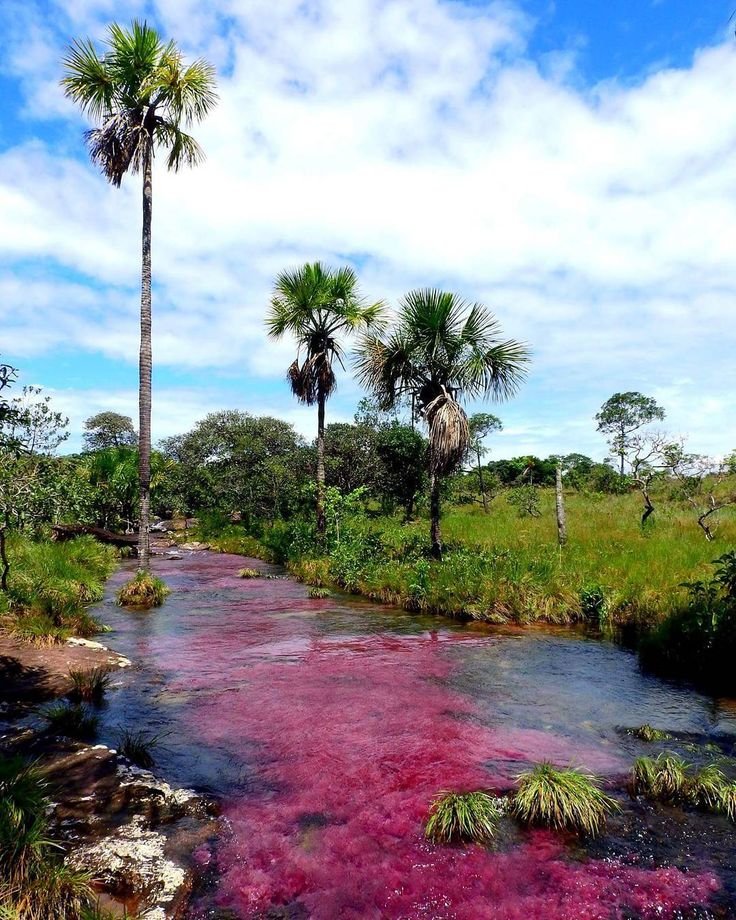
Travel Tips
Traveling to Colombia in 2025 promises an enriching experience filled with vibrant culture, stunning landscapes, and warm hospitality. However, like any international destination, being well-prepared and aware of local conditions will help ensure a safe and enjoyable trip. Here’s a detailed guide covering essential travel tips, focusing on safety advice, local customs, and language basics to help you navigate Colombia confidently.
Safety Advice
Stay Vigilant and Aware of Your Surroundings
While Colombia has made remarkable progress in improving safety over the past decades, travelers should remain alert, especially in crowded places such as markets, public transportation hubs, and popular tourist sites, where pickpocketing and petty theft are more common. Criminals often operate in groups, using distractions to target tourists. Avoid displaying valuables like expensive jewelry, cameras, or smartphones openly, and keep your belongings secure at all times.
Avoid Risky Areas and Night Travel
It’s advisable to steer clear of less-touristy or poorly lit areas after dark. Walking alone at night is not recommended. Instead, use trusted transportation options and travel in groups when possible. Local advice is invaluable—ask your hotel or accommodation staff about neighborhoods to avoid and safe routes.
Use Licensed Transportation Only
Avoid hailing taxis on the street. Instead, use reputable taxi companies, order rides through apps like Uber or Cabify, or have your accommodation arrange transportation. Licensed taxis in Colombia are usually yellow with white license plates and have the driver’s identification displayed inside the vehicle. Be cautious of unlicensed taxis, which have been linked to express kidnappings and robberies.
Exercise Caution with Public Transportation
Public buses and coaches can be targets for theft and, in some cases, robbery or drugging of passengers. Avoid accepting food, drinks, or cigarettes from strangers while traveling on buses. Keep your bags close and avoid storing valuables in overhead compartments or under your seat.
Road Safety
Driving in Colombia requires caution. Roads may be poorly marked, lack lighting, and be shared with pedestrians and livestock, especially in rural areas. Drivers can be aggressive and traffic laws are not always strictly followed. Avoid driving at night and on secondary roads, which may be dangerous due to crime or poor conditions. Always lock your car doors, keep windows closed, and park in guarded lots in cities.
Stay Informed About Security Situations
Some rural and border areas remain unsafe due to the presence of illegal armed groups, landmines, and occasional civil unrest. Check government travel advisories before venturing outside major cities. When traveling to remote regions, consider guided tours rather than independent travel.
Protect Yourself from Drink Spiking and Scams
Never accept food or drinks from strangers, and keep an eye on your beverages when out at bars or parties. Be cautious when using dating apps or meeting new people, as scams and theft can occur.
Health and Food Safety
Colombian food is generally safe, especially in well-frequented restaurants and markets. To avoid stomach issues, eat freshly prepared food, avoid street food that has been sitting out, and consume fruits you can peel yourself. Always wash your hands before eating.
Local Customs
Greetings and Social Etiquette
Colombians are warm and friendly. A common greeting is a handshake or, among women and close acquaintances, a single cheek kiss. Politeness and respect are highly valued, so using courteous phrases like “por favor” (please) and “gracias” (thank you) goes a long way.
Dress Code
Dress conservatively and neatly, especially in cities and when visiting religious sites. While beachwear is appropriate on the coast, urban areas expect casual but tidy attire. Avoid flashy clothing or accessories that might draw unwanted attention.
Tipping
Tipping is customary but not obligatory. In restaurants, a 10% service charge is often included in the bill. For good service, an additional 5-10% tip is appreciated. Taxi drivers do not expect tips but rounding up the fare is common.
Cultural Sensitivities
Colombia is a diverse country with Indigenous, Afro-Colombian, and European influences. Respect local traditions and customs, especially in rural or Indigenous communities. When visiting sacred sites or participating in cultural events, follow guidelines and ask permission before taking photos.
Language Basics
Spanish is Colombia’s official language, and while English is spoken in some tourist areas, learning basic Spanish phrases will enhance your experience and help you connect with locals.
Essential Spanish Phrases for Travelers
- Hola – Hello
- Por favor – Please
- Gracias – Thank you
- ¿Cuánto cuesta? – How much does it cost?
- ¿Dónde está el baño? – Where is the bathroom?
- No hablo mucho español – I don’t speak much Spanish
- ¿Puede ayudarme? – Can you help me?
- Estoy perdido/a – I’m lost
- Taxi, por favor – Taxi, please
- ¿Habla inglés? – Do you speak English?
Communication Tips
- Speak slowly and clearly.
- Use gestures or point to objects if you don’t know the word.
- Download a translation app for offline use.
- Colombians appreciate any effort to speak Spanish and will often respond warmly.
Final Tips for a Smooth Journey
Additional Practical Tips
- Stay Connected: Buy a local SIM card for reliable mobile data and emergency calls.
- Money: Use ATMs in secure locations like banks or shopping malls. Avoid carrying large amounts of cash.
- Emergency Numbers: The general emergency number in Colombia is 123.
- Travel Insurance: Obtain comprehensive travel insurance covering health, theft, and trip cancellations.
- Respect the Environment: Colombia’s natural beauty is a treasure. Follow park rules, avoid littering, and support eco-friendly tourism.
By following these travel tips, respecting local customs, and embracing the language, your 2025 trip to Colombia will be safer, smoother, and more rewarding. Colombia’s vibrant culture and stunning landscapes await, ready to offer you an unforgettable adventure with the right preparation and awareness.

